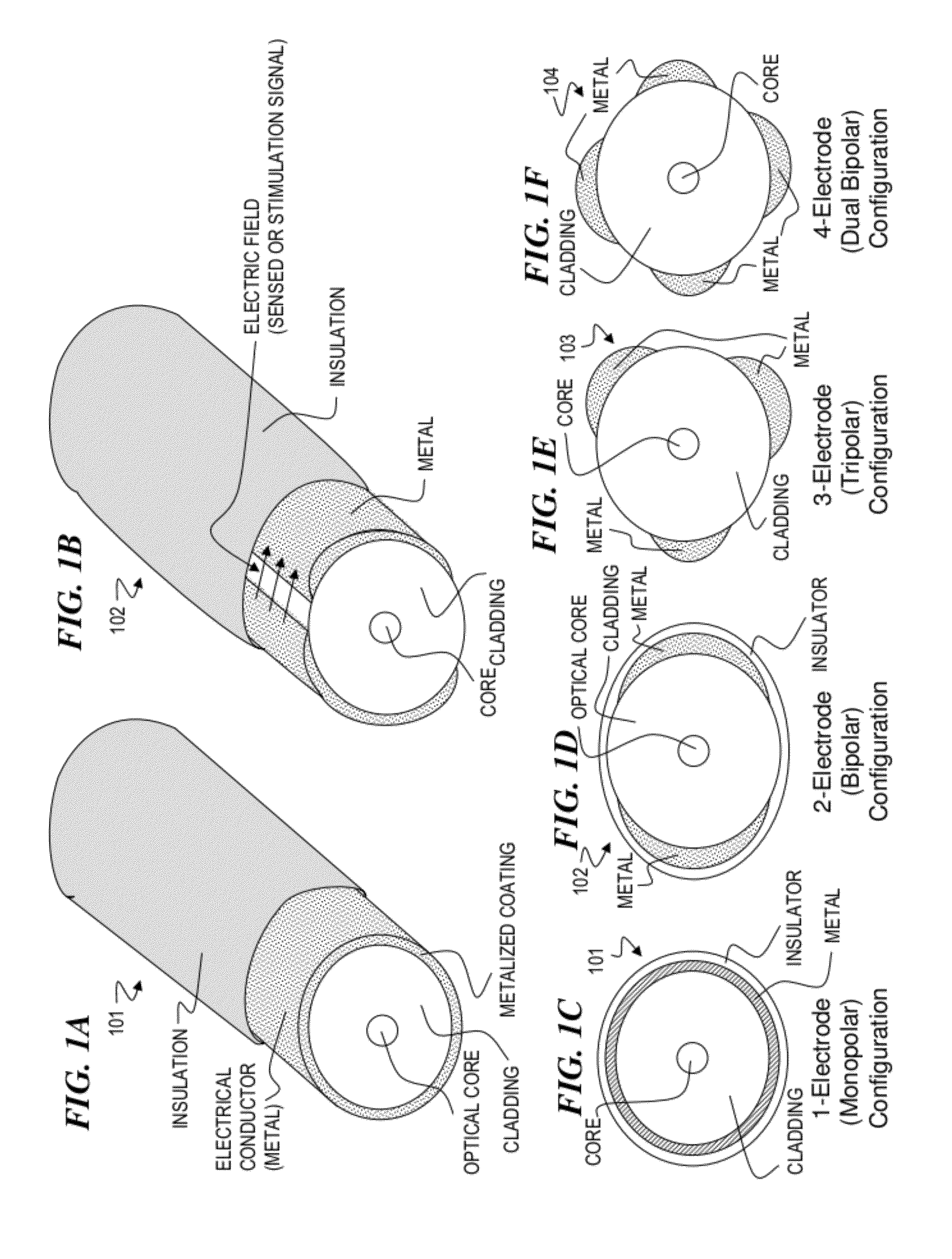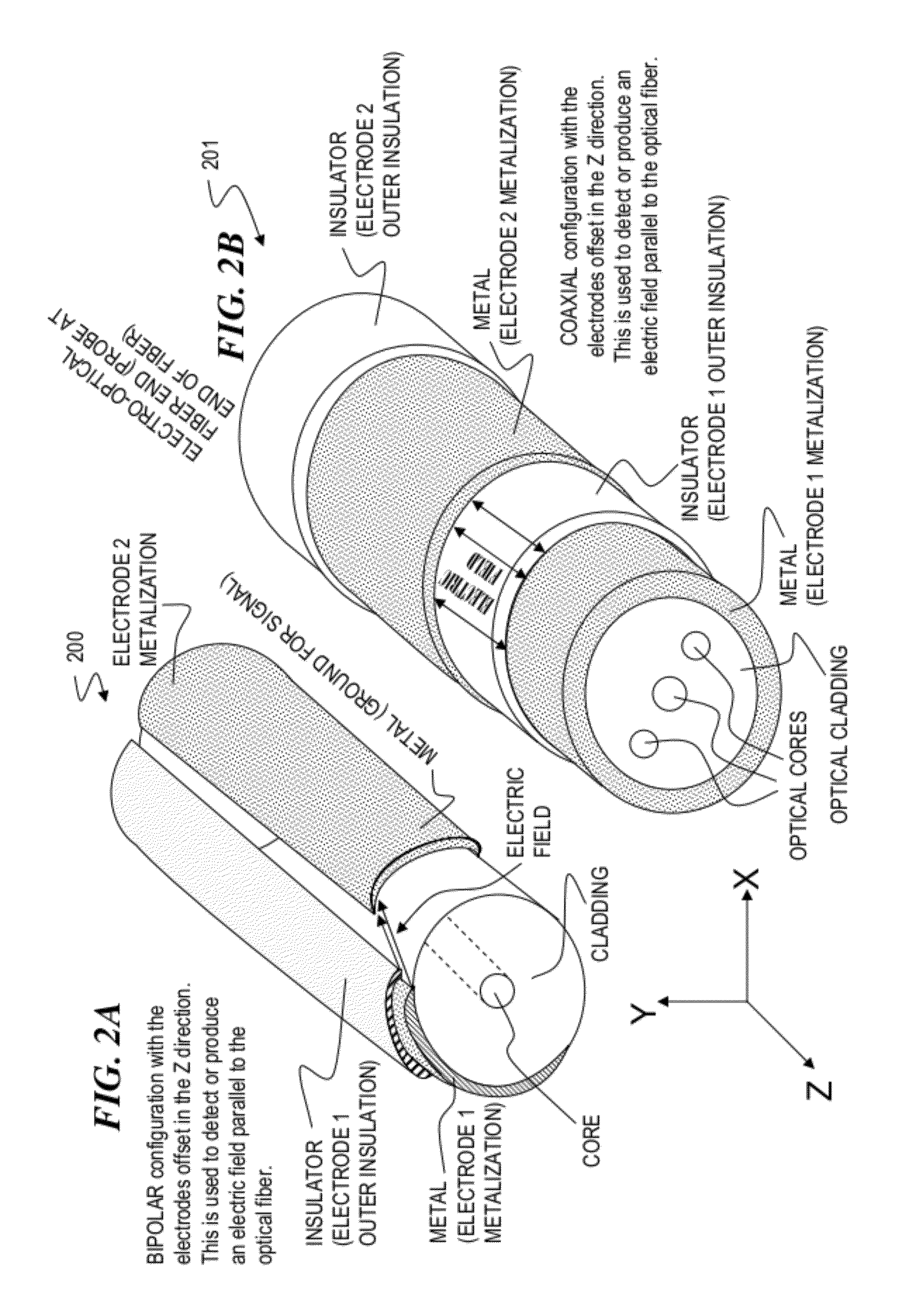Hybrid optical-electrical probes for stimulation of nerve or other animal tissue
a technology of optical-electrical probes and nerves, applied in the field of tissue optics, can solve the problems of affecting the ability to walk or keep balance, people lose vestibular hair cells, and suffer from balance and dizziness problems, and achieve the effects of excellent conductor, simple operation, and enhanced functionality
- Summary
- Abstract
- Description
- Claims
- Application Information
AI Technical Summary
Benefits of technology
Problems solved by technology
Method used
Image
Examples
embodiment 202
[0065]FIG. 2C is a perspective view of an embodiment 202 of the invention in which coaxial metallic coatings of an optical fiber functions in an electrode capacity, in a bipolar configuration with the electrodes offset, relative to one another, in the Z direction, and in which a coaxial film outer conductive layer forms an electromagnetic shield for the signals carried on the inner conductive layers.
[0066]FIG. 2D shows a cross-section view of an optical fiber 203 having a split two-part / bipolar co-axial metal electrical conductor deposited on the optical fiber and a coaxial film outer conductive layer shield deposited on an insulator that covers the two-part electrical conductor.
embodiment 301
[0067]FIG. 3A shows a perspective view of an embodiment 301 of the invention in which an optical fiber is co-located with a separate, monopolar electrode, within a sheathing or a cannula.
embodiment 302
[0068]FIG. 3B shows a perspective view of an embodiment 302 of the invention in which an optical fiber is co-located with a separate, bipolar electrode.
PUM
 Login to View More
Login to View More Abstract
Description
Claims
Application Information
 Login to View More
Login to View More - R&D
- Intellectual Property
- Life Sciences
- Materials
- Tech Scout
- Unparalleled Data Quality
- Higher Quality Content
- 60% Fewer Hallucinations
Browse by: Latest US Patents, China's latest patents, Technical Efficacy Thesaurus, Application Domain, Technology Topic, Popular Technical Reports.
© 2025 PatSnap. All rights reserved.Legal|Privacy policy|Modern Slavery Act Transparency Statement|Sitemap|About US| Contact US: help@patsnap.com



